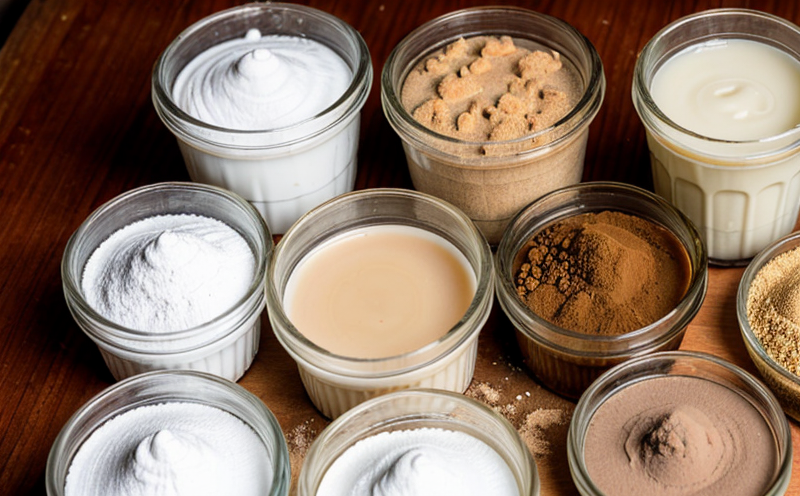AOAC 991.14 Mold Count in Food Using Direct Plate Method
The AOAC International standard method AOAC 991.14 is a widely recognized protocol for quantifying mold contamination in food products using the direct plate count (DPC) technique. This method is essential for ensuring product safety and compliance with regulatory requirements, particularly in the food and feed industry.
The DPC method involves inoculating known quantities of the sample onto appropriate media that supports fungal growth. After incubation at specified conditions, colonies are counted to estimate mold population density. The procedure allows for accurate quantification which can help manufacturers identify potential issues early on before they escalate into quality control problems or consumer complaints.
One key advantage of this method is its simplicity and reliability when compared to more complex techniques like microscopy or PCR (polymerase chain reaction). It provides a cost-effective solution suitable for routine testing in laboratories where resources may be limited. Additionally, it enables quick turnaround times which are crucial in today's fast-paced food production environments.
A critical aspect of performing AOAC 991.14 correctly includes proper sample preparation to avoid contamination from external sources or cross-contamination between samples. Ensuring that all equipment used during testing is thoroughly cleaned and sterilized before use also plays a vital role in maintaining accurate results throughout the process.
The application of this method extends beyond mere compliance; it serves as an invaluable tool for monitoring trends over time, identifying problem areas within production processes, and implementing corrective actions promptly. By adhering to international standards such as AOAC 991.14, food producers can demonstrate their commitment to quality assurance while safeguarding public health.
In summary, mastery of the AOAC 991.14 methodology is crucial for any organization involved in manufacturing or handling perishable goods. Proper implementation ensures not only regulatory compliance but also enhances overall product safety and consumer trust.
Why It Matters
Mold contamination poses significant risks to both human health and commercial viability within the food sector. Excessive mold growth can lead to spoilage, reduced shelf life, increased waste generation, and potential legal liabilities due to non-compliance with safety regulations.
By adopting AOAC 991.14 for routine testing, organizations demonstrate their dedication towards maintaining high standards of hygiene and integrity across all stages of production. This proactive approach helps prevent costly recalls while fostering a positive brand image among consumers who increasingly value transparency regarding product quality.
The ability to accurately measure mold levels through this standardized procedure provides valuable insights into current practices and potential areas for improvement. For instance, if certain batches consistently show higher than acceptable counts, further investigation might reveal underlying issues such as inadequate sanitation procedures or compromised packaging materials that need addressing immediately.
Furthermore, adhering strictly to internationally recognized guidelines like AOAC 991.14 enhances credibility not only within internal operations but also externally towards stakeholders including regulatory bodies, investors, and customers alike. It reinforces the reputation of being a responsible corporate citizen committed to upholding ethical business principles.
Industry Applications
The demand for precise mold counting methods is especially high in sectors dealing with perishable commodities where even small amounts of mold can cause substantial losses. This includes dairy products, bakery items, meat preparations, fruits & vegetables, and processed foods among others.
In the dairy industry, milk and its derivatives are particularly susceptible to fungal contamination if not stored properly after processing. Therefore, implementing AOAC 991.14 helps ensure that all batches meet strict hygiene standards set by regulatory authorities like the FDA (Food and Drug Administration).
Bakery manufacturers face challenges related to yeast strains which can ferment sugars present in dough leading to undesirable flavors or textures if not controlled effectively. Employing this testing protocol allows them to monitor yeast levels closely thereby optimizing fermentation processes without risking spoilage.
For fruit & vegetable producers, maintaining fresh produce integrity is paramount since even minor signs of mold growth could signal the start of decay process affecting marketability and profitability negatively. Thus, utilizing AOAC 991.14 ensures consistent quality throughout supply chains from farm to fork.
Competitive Advantage and Market Impact
Organizations adopting advanced analytical techniques like AOAC 991.14 gain several competitive advantages over their peers:
Enhanced Product Safety: By detecting mold contamination early, firms can take corrective measures swiftly preventing further spread and ensuring product safety.
Informed Decision Making: Regular monitoring allows for informed decisions regarding process improvements thereby enhancing operational efficiency and reducing waste generation.
Better Brand Reputation: Consistent adherence to best practices bolsters customer trust fostering long-term relationships built on reliability and integrity.
Regulatory Compliance: Meeting stringent standards such as AOAC 991.14 demonstrates commitment to regulatory requirements thereby avoiding potential legal disputes or financial penalties.
Innovation Opportunities: Insights gained from comprehensive mold testing can inspire innovative solutions aimed at mitigating risks associated with fungal contamination.
The use of this method impacts various aspects of the food industry including supply chain management, packaging design, and marketing strategies. For instance, companies may choose to highlight their rigorous quality control measures in promotional materials attracting health-conscious consumers seeking safe products.





